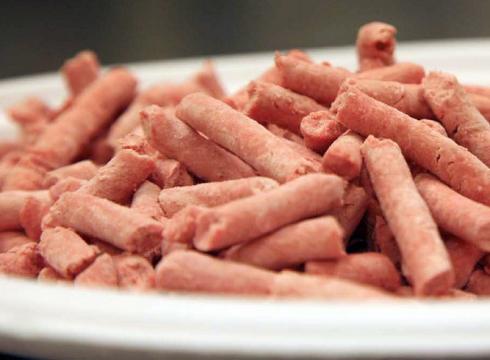By Susanne Posel
Occupy Corporatism
Cargill will begin labeling their beef products that have “finely textured beef” (FTB) or pink slime and genetically engineered ingredients.
FTB is made from processing other cuts of beef trimmings that were washed in ammonia.
John Keating, president of beef operations at Cargill said: “Our research shows that consumers believe ground beef products containing finely textured beef should be clearly labeled. We’ve listened to the public, as well as our customers, and that is why today we are declaring our commitment to labeling finely textured beef.”
Michael Martin, spokesman for Cargill stated: “Not all of the ground beef products contained the binder.”
The corporation will label those that do. This includes:
• Excel brand
• Our Certified Ground Beef
Patty Lovera, assistant director at Food and Water Watch (FWW) says that the hype about pink slime is “overblown” and that the decision to label from Cargill “is a good minimum step.”
Earlier this year, Beef Products Inc. (BPI) announced they are suing the American Broadcasting Companies, Inc. (ABC) for defamation after the mainstream media covered stories about how BP produces pink slime.
BPI is the nation’s largest producer of pink slime which is a mixture of bovine connective tissue and beef scraps doused in ammonia formed into a paste.
This paste , used as a bonding agent, is a cheap adhesive that keeps the beef together. BPI asserts that pink slime is safer than conventional ground beef because of the ammonia treatment.
The ammonia treatment prevents salmonella in tests conducted by the National School Lunch Program (NSLP) in 2005 and 2009.
BPI completely disregards that fact that ammonia is a dangerously caustic poison that causes respiratory illness, lung damage, liver problems and various forms of cancer. Simply swallowing a small amount of ammonia can have deadly effects.
The USDA uses pink slime in its NSLP a taxpayer-funded government food program that provides lunches low-income students.
Pink slime was originally used in pet food and cooking oil before the USDA approved its use as a food additive in ground beef and processed meats.
Carl Custer and Gerald Zimstein, microbiologists for the USDA, stated that pink slime should not be allow for public human consumption because it was actually salage, not meat.
Another product that is consumed by the unwitting public on a daily basis is meat glue .
This is the restaurant industry’s dangerous little secret.
This glue is derived from “natural” products. Transglutaminase , an enzyme, is used in most restaurant kitchens. Its brand name is Activa. The meat glue is used when the restaurant does not want to waste food.
The restaurant will bind two pieces of meat together with the glue and charge the premium price for the food. It is most typically used in place of toothpicks on specialty cuts like filet minion wrapped in bacon.
According to reports: “The outside of a piece of meat comes in contact with a lot of bacteria making its way from slaughterhouse to table.
Usually cooking a steak on the outside will kill all that off. The center of a single cut of steak is sterile, that’s why you can eat it rare. But glued pieces of meat could contain bacteria like E. coli on the inside.”
Sources: Occupy Corporatism
Related articles









